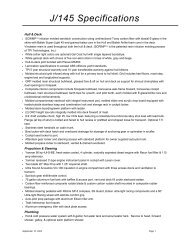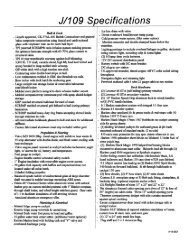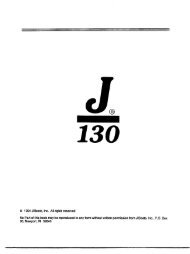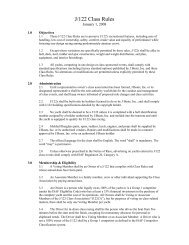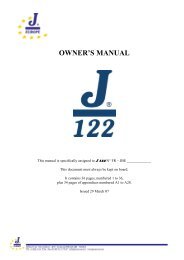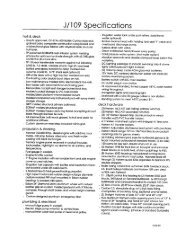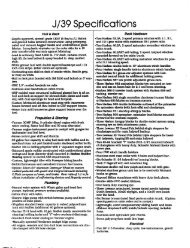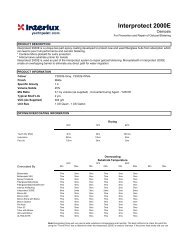Tuning & Trimming Tips from 08 Kiel Worlds - J/Owners
Tuning & Trimming Tips from 08 Kiel Worlds - J/Owners
Tuning & Trimming Tips from 08 Kiel Worlds - J/Owners
Create successful ePaper yourself
Turn your PDF publications into a flip-book with our unique Google optimized e-Paper software.
generally were in between the #5 and #7 position representing a total jib halyard range of about 40mmbetween 10 and 25 knots. We thought in general that most boats didn't carry enough jib halyardtension in the windier conditions. With the Kevlar jib, it's important to have a low stretch halyard thatwill hold its position. It's also important to at least have a way of running the jib halyard tail to awinch. We rigged a block to the mast eye near the deck and then another at the stanchion base in orderto be able to lead the halyard to the cockpit. (CAUTION – the mast ring at deck was not designed forhigh halyard loads so you must rig a short rope strop around the mast to the other eye – also the samefor the stanchion base – run a short strop around the entire base, don't just shackle to the little leg).We drilled intermediary holes in the jib track so that we didn't have to reverse the jib car in order tofine-tune the jib lead position. The stock Ronstan jib track has holes every 50mm, so we drilled twointermediary holes spaced at roughly 17mm apart. For the regatta we found that we used threedifferent positions. Our all purpose medium air setting was what we called the #3 hole, which was veryclose to the front of the cabin window. We liked this lead when we were sailing with full crew on therail and ½-¾ backstay tension. In this position, we found we could trim the jib hard enough to get afirm leech and point high in the flat spots, but also ease the sheet 30-40mm and twist off the leech forgoing fast through waves. Once we reached full backstay tension and were starting to carry somebubble in the main to depower, we slid the lead aft to the #4 hole, which was the first stock track holein front of the shrouds. When it got windier (over 18 knots) we slid back one more hole to #5. On Day1 and 4 of racing we shifted between the #4 and #5 lead. On Day 2 and 3 we were mostly in #3 all day.If lighter (under 10 knots) we would have likely gone to #2.For the other non-dynamic controls (cunningham and outhaul) we followed the normal procedure ofpulling harder when it got windier. We did notice that many boats did not have enough cunninghamtension in the windy races. The mainsail draft should be at about 50%. If you pull the backstay downall the way and don't pull the cunningham hard enough to remove wrinkles, then the draft will be 60%or more aft, which is not a good airfoil. For the outhaul, it is also very easy to let it out too muchdownwind. Yes you want to release to uncrease the foot but if you let out too much you reduceprojected sail area.Dynamic Sail ControlsThe most critical sail controls on any sailboat are the sheets, and this was really evident for us on theJ/80 this week. In the rapidly changing wind conditions we decided <strong>from</strong> the outset to trim the jib on



